I have included affiliate links within this post to make finding the materials that I talk about in this post easier to find.
One way to increase engagement and decrease behavior issues is through using games! You can get a FREE set of Multi-Step Word Problems here.
Why I believe using positive classroom management strategies is so important
You are here because you are looking for specific usable strategies for classroom management. You are tired of reading articles with general suggestions such as “build relationships”. Let me tell you, teacher friends, I have BEEN there. I have had years where I was crying at lunch, dreading the bell signaling the kids’ return, feeling that I couldn’t take another 15 minutes, let alone the rest of the school year! If you are there right now, whether at the beginning of the school year or somewhere in the dregs of winter, I see you, feel you, and am here for you. This article is for YOU.
On the other hand, I have also had years where I looked forward to going in each day, and classroom behavior was not one of my top concerns (one of my favorite years was when I had 35 third graders in a high-needs school district). What made ALL the difference? Focusing on positive strategies for classroom management.
There are a ton of studies and articles about why teachers leave the classroom. Classroom management and behavior problems are ranked high on the list (if not at the top of the list. Classroom management issues cause a loss of a whopping 144 minutes per week, and fully one-half of teachers do not feel prepared to deal with classroom management when leaving their teacher prep programs. No matter how good your prep program was, you aren’t dealing with a classroom from day one, on your own, until your first day in your very own classroom.
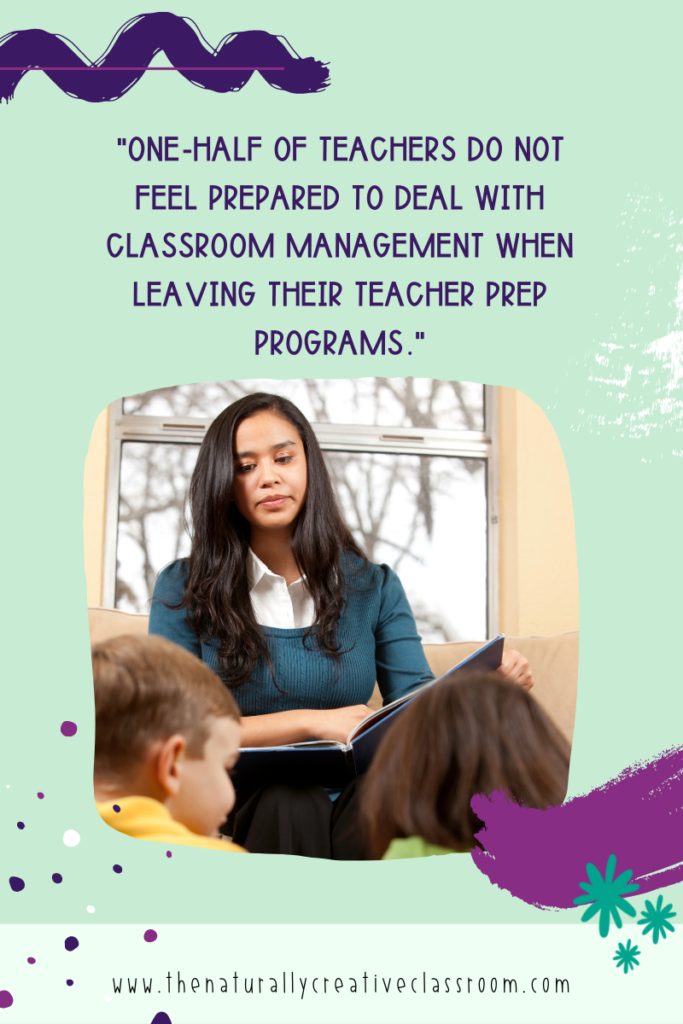
My goal is to leave you with concrete classroom management techniques that you can implement TOMORROW to turn your classroom around.
Who am I to talk about classroom management?
I was lucky enough to attend the official PBIS training and help my school implement every aspect of PBIS and saw the stark changes throughout the school. Do you know the saying “it takes a village”? In the case of creating a positive learning environment in the classroom, it really starts with the whole school. If you are lucky enough to be in a school with a cohesive, school-wide behavior program that everyone is bought into, such as PBIS, then you have found a gem. Imagine every adult in the hallway looking out for positive behaviors from a class, handing out tickets, and celebrating behavior with a once-monthly celebration filled with choice and engagement.
If your school does not embrace this approach, I can help give you some of the tools to get your classroom management strategy off to a good start (or help redirect it when it’s gone off the rails)!
What is a positive classroom management definition?
When you use positive classroom management techniques, choose to focus on positive behaviors rather than negative behaviors. One quote that I live by is “Whatever you focus on will grow.”

One strategy for classroom management is to remember that students are prone to focus on the last thing they hear. For example, if you say “stop banging on the desk,” you focus on the negative behavior of banging on the desk. Instead, if you say, “I like how Nathaniel’s hands are quietly resting on his table,” you focus on the quiet hands. In the statement “stop banging on the desk,” the last thing they hear is banging on the desk. If you say, “I like how Nathaniel’s hands are quietly resting on his table,” then resting on his table are the last words they hear.
How do positive classroom management styles affect the learning environment?
You want to be that classroom, right? That teacher that every child and parent wishes for even before the last school year is out? The teacher known as fair, kind, consistent, and who gets through the rigorous curriculum in an engaging way? We all do! The first step (after envisioning yourself there) is embracing these strategies for classroom management.
A positive classroom environment has the following characteristics:
- Students and Teachers know the expectations and follow them
- Students feel safe and empowered
- Teaching and learning go smoothly and uninterrupted
- Both teachers and students feel respected, in your classroom and outside of it
- Positive, healthy relationships have been established and are maintained throughout the school year
- Increased learning time
Students also need clear, consistent consequences (think sheets, loss of free time, conference with the teacher) for clearly defined misbehaviors. In their book The Whole-Brain Child, by Daniel Siegel and Tina Payne Bryson discusses how the word “discipline” actually means “to teach”. Ideally, students, teachers, administration, and parents follow through (a teacher can dream, right?!). I don’t want to spend too much time here, but I believe natural consequences have their place.
What is classroom management and how do I get off to a good start?
Be proactive! It’s much harder to go back than starting heavy at the beginning and back down a little bit later on. If I could go back in time and give myself some advice, it would be to SLOW DOWN. I know we hear it EVERY YEAR, but effective strategies for classroom management are crucial to starting the year off right.
My best years have been years I have taken the time to “go slow to go fast later.” Focusing on teaching behaviors can be REALLY hard when some of your team have flown ahead with the curriculum, are on Day 5 of math, and you haven’t started yet. Take a deep breath and remind yourself WHY you are doing this. Here are a few things you can do at the beginning of the year that won’t take time out of your teaching minutes.
Meet the Teacher Newsletter
One of the first thing you can do is to start establishing a positive classroom environment as soon as you get your class list. I have created a “Meet the Teacher” newsletter that I print out on colorful paper and physically mail out to students before the school year starts. Kids love getting mail, so this makes a great first impression on students and their parents.
Greet Students at the Door
Another way you can establish a positive classroom environment is to greet kids individually at the door every morning. Pre-covid, I had three choices- a hug, a handshake, or a high-five (the chart is now different). I make sure to get down on their eye level and say good morning. Studies show this can help reduce disruptive behavior by 20%.
I know it is difficult (if not impossible) for me to be at school early as I’m a single mom, and I have two kids of my own to get to school on time. To make the morning a little easier, try as best as possible to be ready for the next day before you leave in the afternoon. I find changing the schedule, checking for birthdays, and getting my copies and materials for the next day allow me to greet the students without feeling rushed.
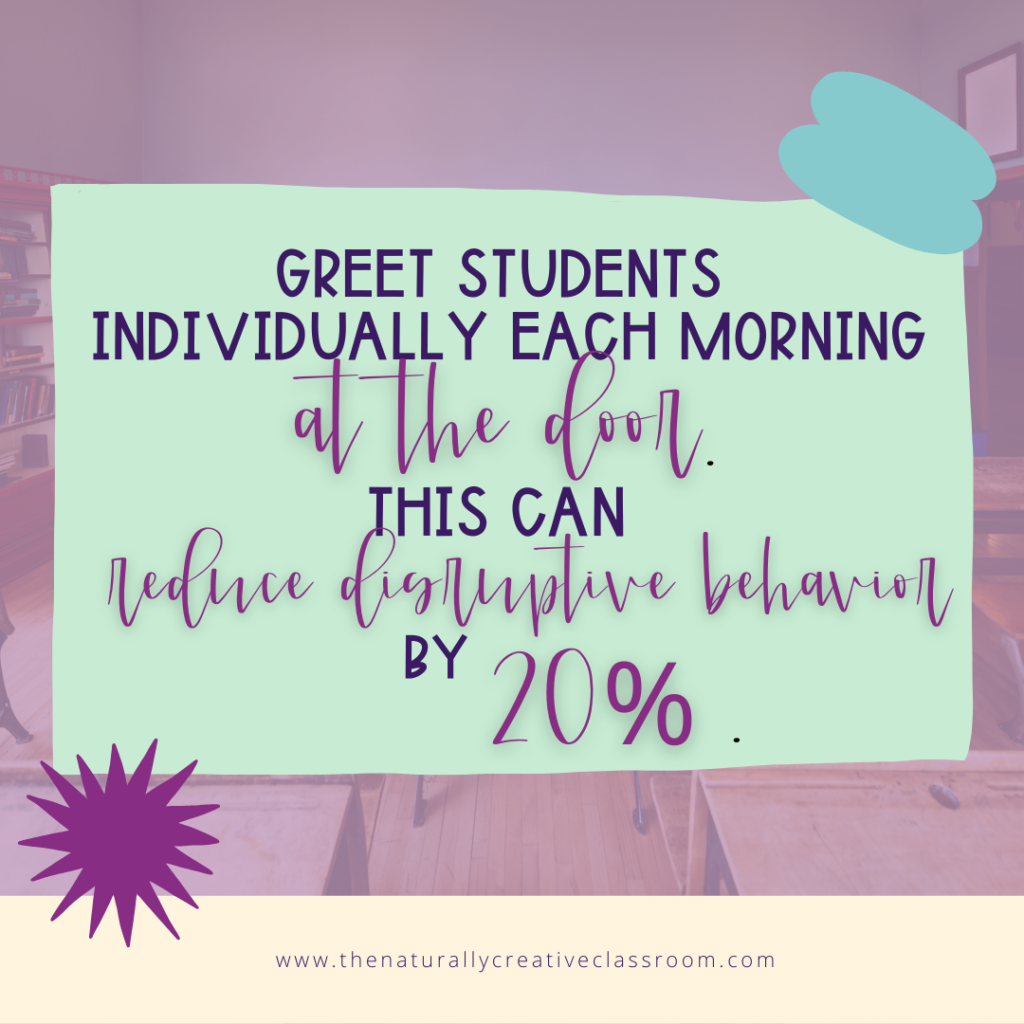
Schedule 1:1 meetings with your students
Another great classroom management strategy is to have 1:1 meetings with your students. If you use Daily 5 with 1:1 meetings or a similar program, this one is super easy as it is already built into your program. If not (or if your meeting time is designated for reading tests), choose one student a day to invite to eat lunch with me, but they still go to recess. While I usually work through lunch, doing this at the beginning of the year will pay dividends later.
Make a Positive Phone Call your first parent contact
This third suggestion has been with me the longest. This is a piece of advice I got my first year of teaching, is one of my favorite strategies for classroom management and something I make SURE to do every year. During the first week or two weeks of school, I make a note of something I have seen a student do well and call five parents a day to let them know until I have called every parent in the class (for some kiddos, you might want to make this your first AND second call). Parents are SO surprised. Generally, a call from their child’s school is not good news.
I also use this opportunity to introduce myself and ask them if they have any “burning questions” or concerns about the year to come. These aren’t long phone calls, maybe just a minute or two, but it helps build that positive relationship for when you have to call again for something not so great.
Correct Behavior in a Positive Way from Day One
In the teacher Bible The First Days of School (or what USED to be the teacher Bible), Harry Wong says to correct misbehavior from the very first step into the classroom. You will teach the students how you want them to treat you and the learning environment. For instance, if a child comes running into the room or galloping to their desk, you say with a smile, “can you please go back to the door and try that again?” (In 1st grade and up, students SHOULD know not to run). If they are unfamiliar with how to correctly enter a room, say something like, “when kids enter a room, they should walk in quietly and head directly to their desk and sit down, like this.” Then model the behavior for them and let them try again.
My suggestion is to choose just one of these strategies for classroom management and give it a try. Taking on too much at one time will only overwhelm you.
The BEST classroom management strategy for elementary
I am not using these words lightly. Teaching individual expectations is the BEST classroom management strategy for elementary. I will spend no more than ten minutes introducing each expected behavior at the beginning of the year. The lessons are short, to the point, and easily understood by all grade levels.
If you don’t have them already, make these three no-exception expectations in your classroom: “be respectful, be responsible, be safe.” Most things can fall under these three umbrellas.
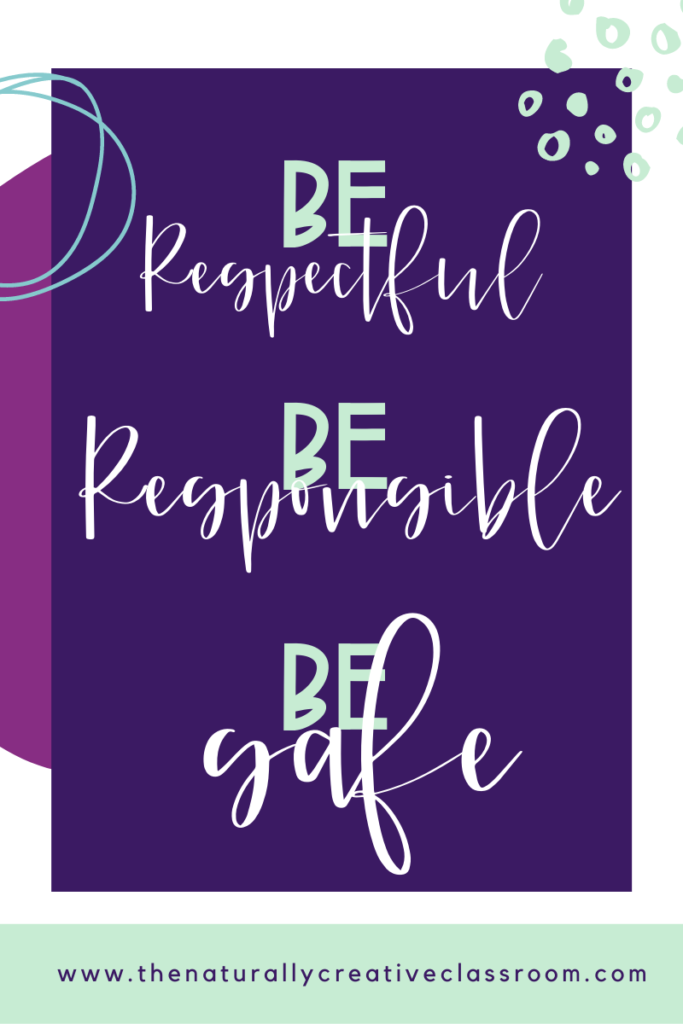
Classroom Management Plan Example:
- Purpose -setting the tone as to WHY the behavior is essential. For example, “We keep our hands and feet to ourselves at all times at school because it is respectful of other people’s space and it keeps us safe.”
- Teaching examples– Sometimes, we need to differentiate for them that it might be OK for them to wrestle their friend/sibling at home, but it is not safe or expected at school. I also give a scenario and ask them what the characters should do. For example, “Julie is in line when Talia bumps into her, causing Julie to stumble. Julie is pretty upset and turns to face Talia. What should she do next?” (of course, Julie should use her words, not push her back, as some students might)
- Roleplaying– Acting out a scenario is, in my opinion, crucial. First, have a student volunteer to show the RIGHT way to do the behavior, such as walking to line up for music. Next, choose another student (a great time to give some of the squirrels in your room positive attention), and have them show the WRONG way (yes, you read that correctly) to do the behavior- such as running to the door. THEN have them show the RIGHT way. Then, when needed, you can say, “remember, you have shown us that you know the right way. Can you please show me how to walk to the line?”
- Reinforcement– following up and targeting the new expectations with behavior-specific praise. “I like how you walked to the line,” “I noticed that when you got jostled in line, you kept your hands to yourself! Good job!”. Reinforcement is probably the most challenging part, as it needs to be maintained all year (more about that further down)
During these lessons, we cover everything from lining up to tattling vs. telling to how to earn trust in the classroom. Many behaviors are covered in the first few weeks of school, either fitting them in naturally or squeezing them into the morning meeting. One of my favorite morning meeting lessons is the Wrinkled Heart. You can read more about it here.
Over the years, I have created and use slideshows, posters, and year-long activities that I refer back to or personalize for individual students. As one of the essential strategies for classroom management, I constantly reinforce the first month or two, calling on someone to show us the right way to line up before we go to PE or complimenting how a student raised their hand to speak.
- You can find all of the lessons that I use here,
- the slideshows that I use here
- all of my behavior materials here.
Creating a positive classroom environment for student responsibility
I absolutely LOVE the type of classroom community described in the book Teach Like Your Hair is on Fire, where every student applies for a job and gets paid a certain amount a week for doing that job, but to be honest, I have never done it. Everything else gets in the way.
One thing I know is that most students love to help and love having a job. A positive classroom environment for student responsibility will increase engagement, ownership, and the desire to KEEP the classroom positive.
One way to do this is, when students are in groups, each person in the small group gets a job, such as “Table Manager,” “Paper Passer,” “Supplies,” and “Custodian.” I have done this with students as young as kindergarten. Each person is in charge of specific tasks for the week, like getting up when the group has a question or making sure the chairs at the table are up before the students leave for the day. Table jobs are in addition to the classroom jobs you may have assigned to the students.
Another way I encourage student responsibility is by handing over the weekly newsletter to assigned students. Students should share any exciting tidbits, notes on learning, upcoming activities, or necessary information. The newsletter can be typed up or handwritten.
I will talk more about this below, but the most crucial thing I do is teach all the children each expected behavior. We make posters, review, and teach again when needed. This way, they KNOW what is expected of them immediately.
What is positive discipline in the classroom?
Remember that the meaning of “discipline” is “to teach.” Even the teacher with the most effective strategies for classroom management will need discipline in the classroom. The goal is to teach the student what the incorrect choices were, what they can do to help fix the situation, and what they can do better next time. For a behavior such as blurting out, take them aside at a quiet time and practice the correct way to show you want to answer a question. If they run to the line, kindly ask them to “try that again.” If a student’s behavior is more disruptive, then they can complete a think sheet that will be sent home and signed by their parents. I like to use a think sheet such as the ones here.
If the behavior is more significant than one that can be handled using these techniques, it may be time to call parents and possibly connect with your social worker for more extensive interventions.
How to maintain a positive learning environment in the classroom
Ah yes, often the Achilles heel of classroom management- maintenance! You spent SO MUCH time teaching everything they needed to know about classroom behavior at the beginning of the year. They are in 3rd grade now, and you KNOW they should have a general idea of how to behave, so WHY are some kids still having trouble following expectations in January? The key to both avoiding and fixing this problem is maintenance.
Don’t despair! Even if you did not follow through with reinforcement earlier, you can start from where you are and go forward with success. I won’t lie; it will be a little harder to start later, but still doable. The best time to try new strategies for classroom management is after a natural break, such as after Thanksgiving, winter, or *gasp* even spring break. The PBIS model encourages schools to devote a half-day after a break to review school-wide behavior expectations.
Class Bucket
You want to make sure that your “toolbox” full of strategies for classroom management is full! One tool I use every year is a class bucket. I have a clear bucket that I put a “warm fuzzy” in each time the class is caught being good or when an individual student is caught being good. A once-monthly celebration is the goal, so I intentionally add fuzzies at that pace. Fuzzies and the promise of a class celebration are excellent group motivation.
Ticket System
A second tool you will want to implement is a ticket system to encourage individual motivation. You will get more buy-in. I always end up breaking down, so I have come to accept it. Tickets are a huge motivator for kids, instantly “marking” the behavior you want the children to display. T also shows the kids around them what you want. I swear you haven’t seen a rug straighten up faster than when those tickets start to go out.
Don’t worry; I know that keeping up a prize box is THE WORST. I have your back with a list of FREE prizes and rewards that students will want as well as a tip for making sure you are handing out tickets as evenly and fairly as possible.
Lastly, kids spend their tickets at the class celebration, after having kids of my own and struggling with a reward system such as this (it should be intrinsic, right?). The truth is, everyone works for something, and even teacher’s kids don’t always love school. A ticket system is a delayed reward that gives them the motivation to work towards something they like.
Class Celebration
At my school, where we implemented PBIS, we had a once per month celebration carved out especially for this. Each teacher hosted a different event in their classroom, and each activity charged an additional amount of tickets based on anticipated interest. The celebration activities and costs were posted for a month, enabling students to earn enough tickets for their desired activity.
Because it is one of the most effective strategies for classroom management, you want to make sure you follow through with the rewards. As most schools do not have this system, you can easily recreate it with some help from parents. I thought of activities that require items you probably already have at home or school. Take advantage of the unique talents of your team or parents.
If you need to purchase any supplies for the below activities, they are low-cost and can easily last you throughout the year (guaranteed much cheaper than trying to maintain a prize box). Small groups can be taken to other locations if needed.
Here are some ideas:
Low-to-No Cost Rewards kids LOVE
- Outside structured games (duck, duck goose, water balloon toss, etc.)
- Tetris Challenge (tetrominoes…that’s math!)
- Read Scary Stories To Tell in the Dark by flashlight
- Friendship Bracelet Making (if using string, prepare some ahead of time)
- Directed Drawing (Love Art KidsHub)
- Lego Time
- Magna Tiles
- Nail Salon
- Face Painting
- Set up a green screen with a green sheet
- Balloon Animal Creation (I geeked out on this set)
- Glow Stick Dance Party
- Origami
- Scratch Coding for Kids
- Board games
- Intricate coloring pages with some freshly sharpened colored pencils only used for this time
- Make a stop-motion video using ipads (your tech person may need to install the app ahead of time)
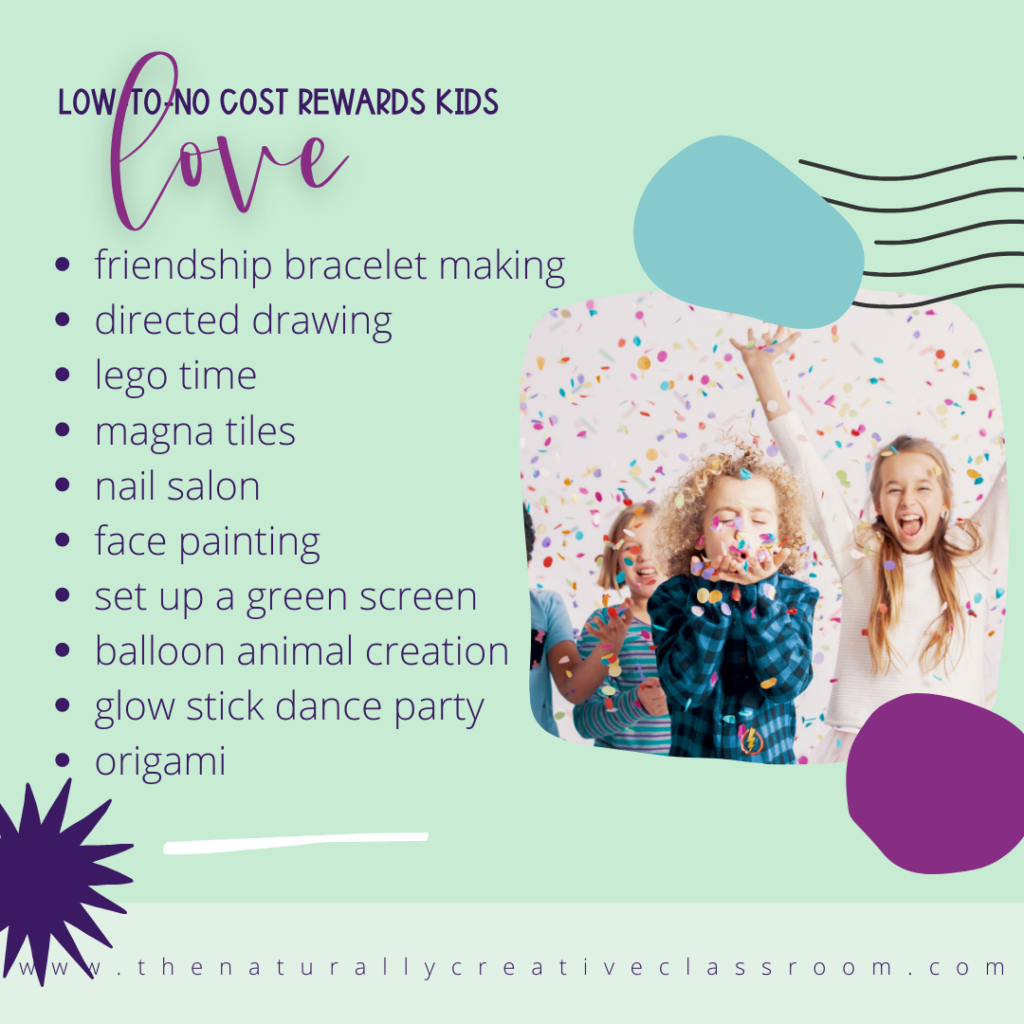
If you need more free ideas, I know that my local library has game packs and other activities for checkout; maybe yours does too! If you are lucky enough to have a school library packed with STEAM resources (coding robots, maker’s center, etc.), check out some of the activities your students don’t have a lot of time to use.
You can also offer coupons for things such as No Homework, sit by a friend at lunch, or extra points on a test. I would make this reasonably low cost and make them available throughout the year. You can find some free coupons here.
All the Supplies You Need to Get Started
Class Bucket and Fuzzies
I am all for reusing something you already have for this one. A clear container is best as you can easily see the level of fuzzies in the jar. If you have eaten a tub of pretzels or some animal crackers from Costco, you can re-use this container. If you need a clear bucket, this is a good one on amazon.
I like this assorted size fuzzies bag. You can then add a fuzzy size that fits the good deed 🙂
Tickets
You can create tickets 4-6 per page for this purpose, but you will constantly be cutting them out all year. For ease, I buy a roll of tickets. Will a student try to buy some and “cheat”? Probably. Will you wash your pants with handfuls of these tickets in your pocket? For sure. Be prepared for both. I make sure to initial each ticket with a sharpie, so it is clear that I handed it out. The students are responsible for putting their names on the tickets.
These tickets are perfect and come in a variety of colors.
I LOVE these mini sharpies that you can clip on your lanyard. They don’t last forever, so I buy a pack to last me the year. Every teacher should have these.
Ticket Storage
For ticket storage, I recommend a clear hanging pocket chart like you would use for a calendar. Put the student’s numbers on the pockets with a sharpie. I have tried many systems, and this is the best. You can hang it on your wall or a rack, but it is reachable and allows you to instantly see who needs more tickets or who has relatively too many (an easy thing to fall into). Have designated times when students can get up to put their earned tickets into their pockets. This 30 pocket supply organization chart from Lakeshore is my favorite.
Now you know how to Effectively Manage your Classroom
Well, at least you can start! I hope that you have come away with some actionable steps that you can take to give you hope and turn your classroom into a place you can’t wait to walk into each day! When you are ready, increasing engagement through gamification is another wonderful strategy for classroom management! Find out more here.

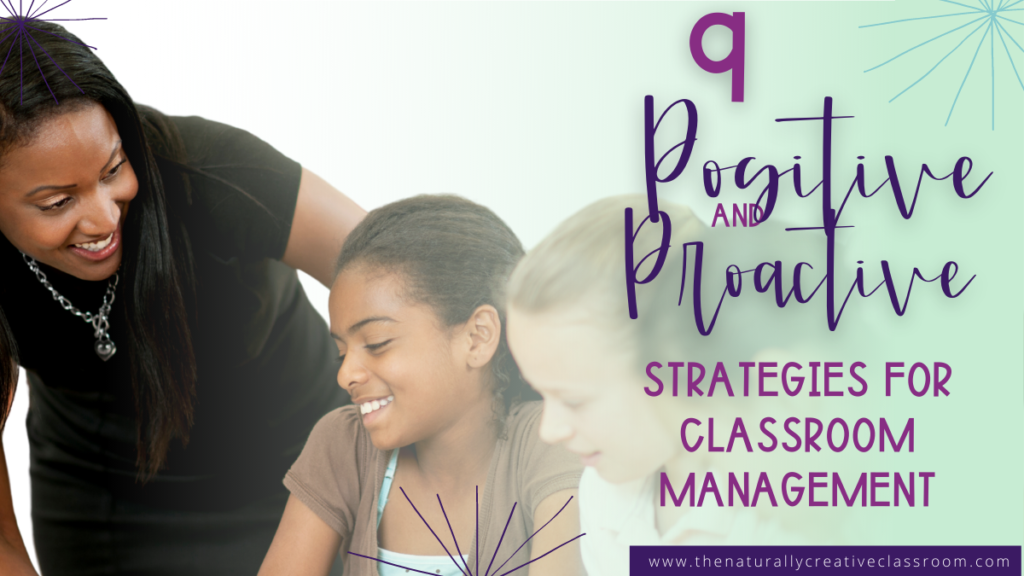
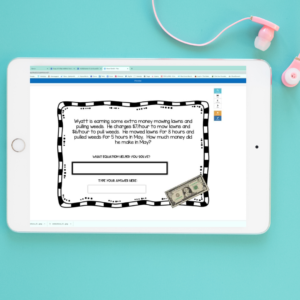

One Response